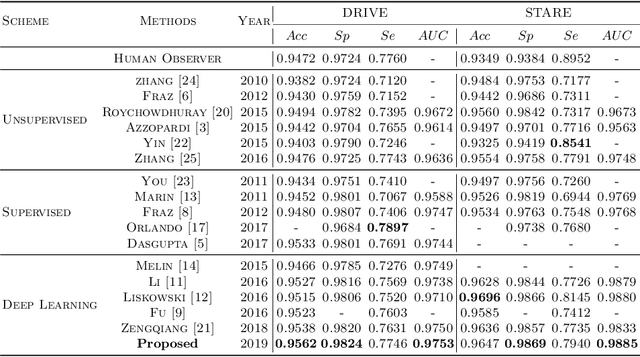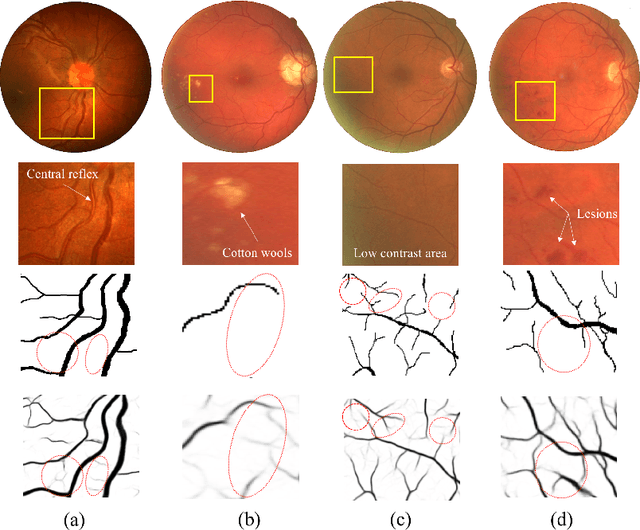Patch-based Generative Adversarial Network Towards Retinal Vessel Segmentation
Paper and Code
Dec 22, 2019


Retinal blood vessels are considered to be the reliable diagnostic biomarkers of ophthalmologic and diabetic retinopathy. Monitoring and diagnosis totally depends on expert analysis of both thin and thick retinal vessels which has recently been carried out by various artificial intelligent techniques. Existing deep learning methods attempt to segment retinal vessels using a unified loss function optimized for both thin and thick vessels with equal importance. Due to variable thickness, biased distribution, and difference in spatial features of thin and thick vessels, unified loss function are more influential towards identification of thick vessels resulting in weak segmentation. To address this problem, a conditional patch-based generative adversarial network is proposed which utilizes a generator network and a patch-based discriminator network conditioned on the sample data with an additional loss function to learn both thin and thick vessels. Experiments are conducted on publicly available STARE and DRIVE datasets which show that the proposed model outperforms the state-of-the-art methods.
 Add to Chrome
Add to Chrome Add to Firefox
Add to Firefox Add to Edge
Add to Edge